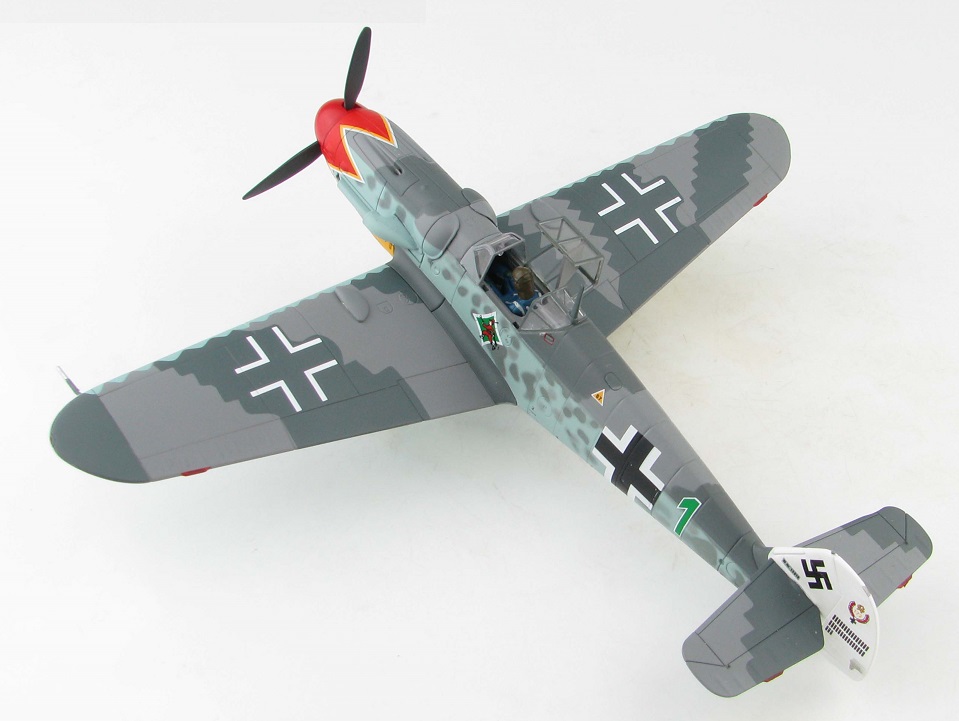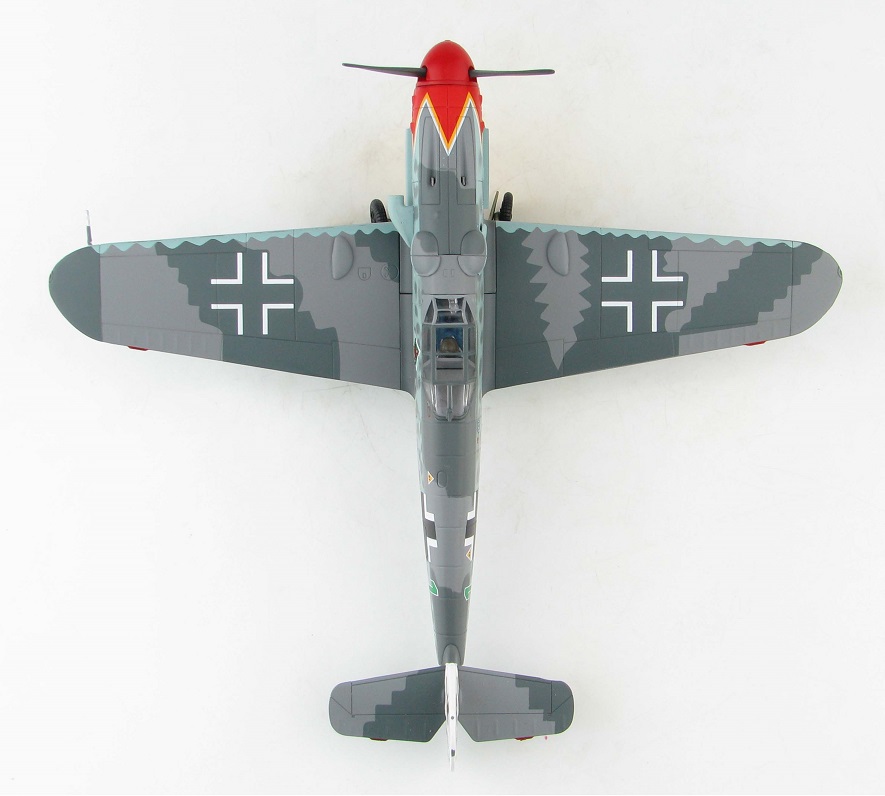Messerschmitt Bf 109G-6 – JG 50, Luftwaffe, Hermann Graf, Wiesbaden-Erbenheim, Germany, September 1943 1/48
Add to compare2 in stock
£79.99
2 in stock
Hobbymaster 1/48 scale HA8751: Messerschmitt Bf-109G-6 “Green 1” of JG 50, Luftwaffe, as flown by Hermann Graf, Wiesbaden-Erbenheim, Germany, September 1943. Production run of 800 models.
Legth 7.5 inches Wingspan 8.25 inches
Hermann Graf (24 October 1912 – 4 November 1988) was a German Luftwaffe World War II fighter ace. He served on both the Eastern and Western Fronts. He became the first pilot in aviation history to claim 200 aerial victories—that is, 200 aerial combat encounters resulting in the destruction of the enemy aircraft. In about 830 combat missions, he claimed a total of 212 aerial victories, almost all of which were achieved on the Eastern Front.
Graf, a pre-war football player and glider pilot, he joined the Luftwaffe and started flight training in 1936. He was initially selected for transport aviation but was subsequently posted to Jagdgeschwader 51 (JG 51—51st Fighter Wing) in May 1939. At the outbreak of war he was stationed on the Franco–German border flying uneventful patrols. He was then posted as a flight instructor stationed in Romania as part of a German military mission training Romanian pilots. Graf flew a few ground support missions in the closing days of the German invasion of Crete.
Following the start of Operation Barbarossa, the German invasion of the Soviet Union, Graf claimed his first aerial victory on 4 August 1941. He was awarded the Knight’s Cross of the Iron Cross after 45 victories on 24 January 1942. It was during the second summer of the eastern campaign; however, that his success rate dramatically increased. By 16 September 1942 his number of victories had increased to 172 for which he was honored with the Knight’s Cross of the Iron Cross with Oak Leaves, Swords and Diamonds. At the time of its presentation to Graf it was Germany’s highest military decoration. On 26 September 1942 he shot down his 200th enemy aircraft.
By then a national hero, Graf was withdrawn from combat operations and posted to a fighter pilot training school in France before being tasked with the setting up of a new special unit: Jagdgeschwader 50 (JG 50—Fighter Wing 50). Its mission was as a high-altitude unit to intercept the de Havilland Mosquito intruders. In November 1943 Graf returned to combat operations. He was appointed Geschwaderkommodore (Wing Commander) of Jagdgeschwader 11 (JG 11—11th Fighter Wing) and claimed his last and 212th aerial victory on 29 March 1944. He was severely injured during that encounter and, after a period of convalescence, became Geschwaderkommodore of Jagdgeschwader 52 (JG 52—52nd Fighter Wing). He and the remainder of JG 52 surrendered to units of the United States Army on 8 May 1945, but were turned over to the Red Army. Graf was held in Soviet captivity until 1949. After the war he worked as an electronic sales manager and died after a long illness in his home town of Engen on 4 November 1988.
Designed to meet a Luftwaffe need for a single-seat fighter/interceptor, the Messerschmitt Bf 109 was first flown on May 28th, 1935. Its all-metal construction, closed canopy and retractable gear made the Bf 109 one of the first true modern fighters of WWII. This versatile aircraft served in many roles and was the most produced aircraft of the war and the backbone of the Luftwaffe, and was flown by Germany’s top three aces, who claimed a total of 928 victories between them. Armed with two cannons and two machine guns, the Bf 109’s design underwent constant revisions, which allowed it to remain competitive until the end of the war.
The first Bf-109G “Gustav” entered service in March 1942. New features were a pressurized cockpit with three larger guns mounted on the nose and none on the wings but could be field mounted. The Bf-109G could overheat causing oil leaks; starting a fire forcing the pilot to bail out. The Gustav was produced in many variants including long-range fighters, recon fighters and bomber destroyers. The Bf-109G-6 lacked a pressurized cockpit but was the most numerous Bf-109 produced and the first to carry 13mm machine guns; equivalent to the American 50 caliber Browning.
| Weight | 1.4 kg |
|---|






